TLE
Specialization in: Electrical Installation & Maintenance
Name: _____________________________ Score: ______________
Directions: Choose the best answer; write your answer in the space provided before the number.
___1. What is meant by an electrochemical cell and battery?
A. A cell is lots of batteries connected together.
B. A battery is a number of electrochemical cells attached together.
C. A cell supplies AC while a battery supplies DC.
D. A cell has a liquid while a battery has a dry paste.
B. A battery is a number of electrochemical cells attached together.
C. A cell supplies AC while a battery supplies DC.
D. A cell has a liquid while a battery has a dry paste.
___2. What is the role of a voltmeter and how is it attached to a circuit?
A. It measures the difference in electrical energy of the charges at one point in the circuit compared to another and is
attached over (parallel) the section it measures.
B. To tell you how much charge has flowed through. It is attached directly in the circuit (series) so it can record the
flow of charge.
C. It measures the difference in electrical energy of the charges at one point in the circuit compared to another and is attached in the circuit (series) in the section it measures.
D.
___3. What is the role of an ammeter in an electric circuit?
A. To measure the energy the charges have at one place compared to another.
B. To measure the flow of charge through it.
C. To record the energy of charges as they flow through it
___4. The image to the right is of a:
(a) Capacitor
(b) Diode
(c) Inductor
(d) Resistor
(b) Diode
(c) Inductor
(d) Resistor
___5. The image to the right is of a:
(a) Capacitor
(b) Diode
(c) Inductor
(d) Resistor
(b) Diode
(c) Inductor
(d) Resistor
___6. The image to the right is of a:
(a) Capacitor
(b) Diode
(c) Inductor
(d) Resistor
(b) Diode
(c) Inductor
(d) Resistor
___7. The image to the right is of a:
(a) Capacitor
(b) Diode
(c) Inductor
(d) Resistor
(b) Diode
(c) Inductor
(d) Resistor
___8. The image to the right is of a: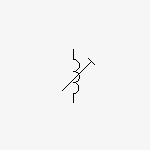
(a) Preset inductor
(b) Preset resistor
(c) Variable inductor
(d) Variable resistor
(b) Preset resistor
(c) Variable inductor
(d) Variable resistor
___9. The image to the right is of a: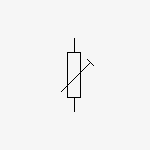
(a) Preset inductor
(b) Preset resistor
(c) Variable inductor
(d) Variable resistor
(b) Preset resistor
(c) Variable inductor
(d) Variable resistor
___10. The image to the right is of a:
(a) Preset inductor
(b) Preset resistor
(c) Variable inductor
(d) Variable resistor
(b) Preset resistor
(c) Variable inductor
(d) Variable resistor
___11. The image to the right is of a:
(a) Preset inductor
(b) Preset resistor
(c) Variable inductor
(d) Variable resistor
(b) Preset resistor
(c) Variable inductor
(d) Variable resistor
___12. The image to the right is of a:
(a) Preset potentiometer
(b) Preset resistor
(c) Variable potentiometer
(d) Variable resistor
(b) Preset resistor
(c) Variable potentiometer
(d) Variable resistor
___13. The image to the right is of a:
(a) Preset potentiometer
(b) Preset resistor
(c) Variable potentiometer
(d) Variable resistor
(b) Preset resistor
(c) Variable potentiometer
(d) Variable resistor
___14. The image to the right is of a: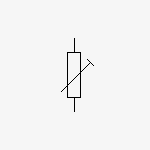
(a) Preset potentiometer
(b) Preset resistor
(c) Variable potentiometer
(d) Variable resistor
(b) Preset resistor
(c) Variable potentiometer
(d) Variable resistor
___15. The image to the right is of a:
(a) Preset potentiometer
(b) Preset resistor
(c) Variable potentiometer
(d) Variable resistor
(b) Preset resistor
(c) Variable potentiometer
(d) Variable resistor
___16. The image to the right is of a: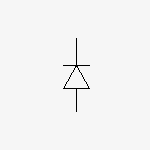
(a) Diode
(b) Light Emitting Diode
(c) Photosensitive didoe
(d) Variable capacitance diode
(b) Light Emitting Diode
(c) Photosensitive didoe
(d) Variable capacitance diode
___17. The image to the right is of a:
(a) Diode
(b) Light Emitting Diode
(c) Photosensitive didoe
(d) Variable capacitance diode
(b) Light Emitting Diode
(c) Photosensitive didoe
(d) Variable capacitance diode
___23. How many light bulbs are in the diagram?
A) 4
B) 2
C) 1
D) 3
___24. What kind of circuit is shown above?
A) concave
B) square
C) parallel
D) series
B) square
C) parallel
D) series
___25. How many batteries are in the diagram?
A) 0
B) 1
C) 3
D) 2
B) 1
C) 3
D) 2
___26. What kind of circuit is shown above?
A) convex
B) rectangle
C) series
D) parallel
B) rectangle
C) series
D) parallel
___27. The diagram shows a switch that's________.
A) open
B) closed
C) loose
D) broken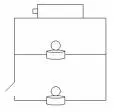
B) closed
C) loose
D) broken
___28. The photo shows a symbol of what object?
A) a switch
B) a wire
C) a battery
D) a car
B) a wire
C) a battery
D) a car
___29. A device able to supply electrical energy is a ________.
A) battery B) nonconductor C) microwave D) conductor
___30. The pathway for electrical current is called a _______.
A) highway B) motor C) circuit D) cloud
___31. When the electrical current CANNOT flow, the circuit is _______.
A) closed B) broken C) open D) loose
___32. The positve (+) and negative (-) ends of the battery are called ______.
A) circuit diagram B) battery knobs C) battery sides D) battery terminals
___33. A circuit that has only one electric flow is _________.
A) battery circuit B) paper circuit C) series circuit D) parallel circuit
___34. The unit that measures a battery's strength is called ________.
A) conductor B) current C) circuit D) volt
___35. A device that opens and closes a circuit is a __________.
A) electrical current B) switch C) volt D) conductor
___36. Objects that allow electrical current to flow are called ______.
A) conductors B) nonconductors C) circuits D) batteries
___37. Objects that DO NOT allow electrical current to flow are called ______.
A) conductors B) batteries C) circuits D) nonconductors
___38. Which parts of the pencil are conductors?
A) The wood and eraser B) The wood and metal C) The eraser and point D) The metal and point
___39. Which activity did we compare the brightness of the light bulb?
A) Series and Parallel Circuits B) Solid Conductors C) Simple Circuits D) Paper-Clip Switch
___40. Which activity did we discover what objects are conductors and what objects are nonconductors?
A) Simple Circuits B) Solid Conductors C) Paper-Clip Switch D) Series and Parallel Circuits
___41. How many volts are in the batteries we have used?
A) 3 B) 1.5v C) 1.5 D) 3v
___42. The series circuit with two batteries, gives how much voltage to a light bulb?
A) 1v B) 3v C) 1.5v D) 2v
___43. The equivalent resistance of resistors in parallel can be calculated by __________.
A. 1/R = 1/RA + 1/RB + 1/RC… B. R = 1/RA + 1/RB + 1/RC…
C. R = RA + RB + RC… D. 1/R = 1/RA x 1/RB x 1/RC…
___44. Base in the image above; calculate its total resistance?
A. 140 Ω B. 130Ω C. 120 Ω D. 140
___44. Base in the image above; calculate its total resistance?
A. 1.4 Ω B. 1.3 Ω C. 1.2 Ω D. 1.6 Ω
___45.
a) 831Ω b) 1.83KΩ c) 831KΩ d) 151KΩ
___46. a) 624Ω b) 8.87KΩ c) 1.48KΩ d) 4.7KΩ
___47. a) 10.8KΩ b) 3.3KΩ c) 6.63KΩ d) 18.3KΩ
___48. a) 9.5KΩ b) 11KΩ c) 8.67KΩ d) 12KΩ
___49. a) 990Ω b) 271KΩ c) 1.26KΩ d) 2.71KΩ
___50. a) 206Ω b) 216KΩ c) 24.5KΩ d) 206KΩ
No comments:
Post a Comment